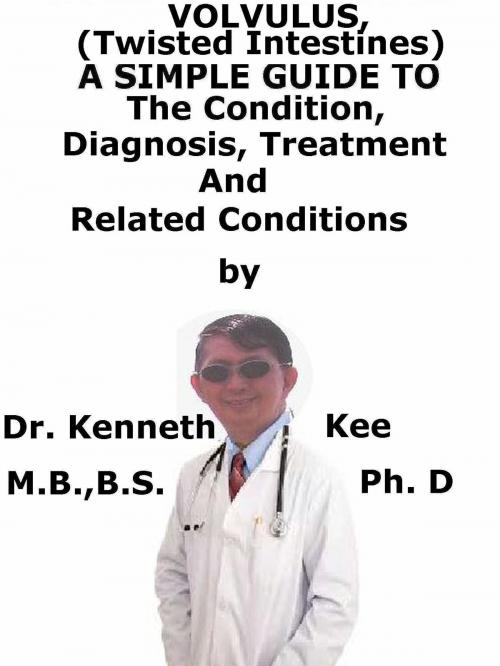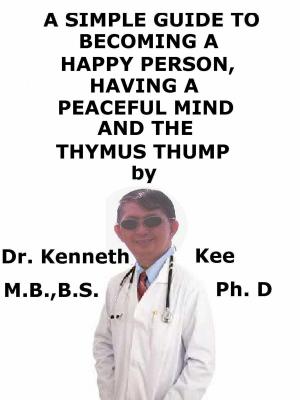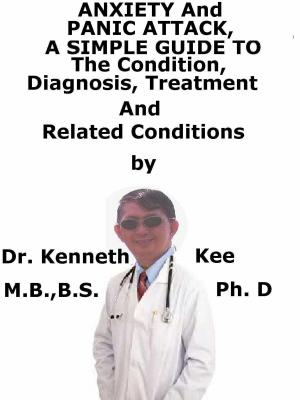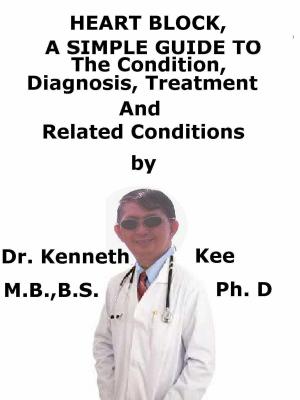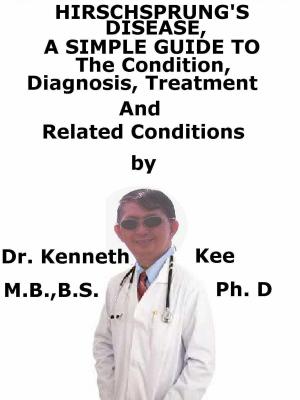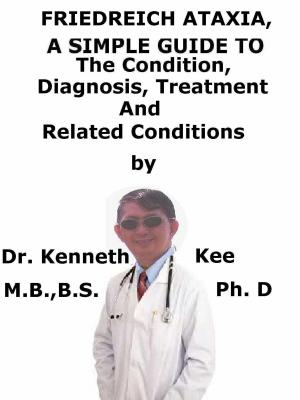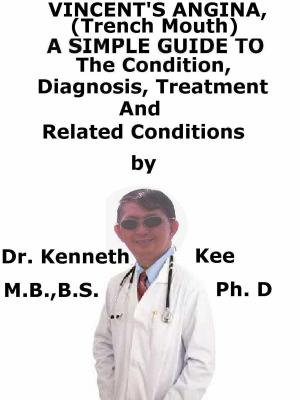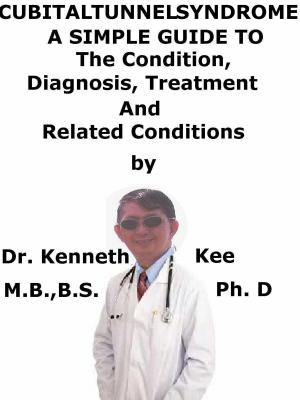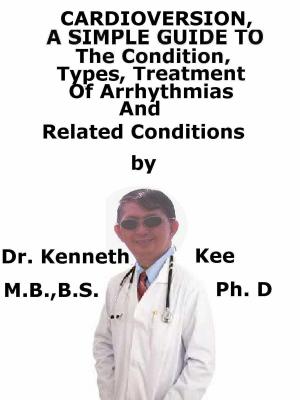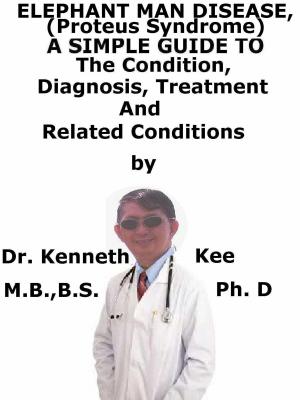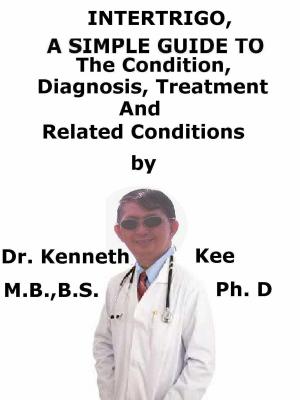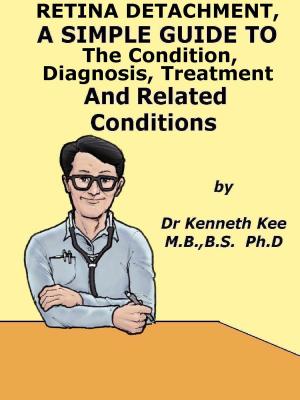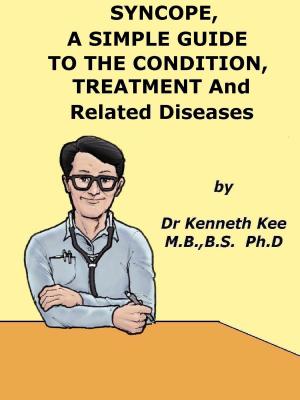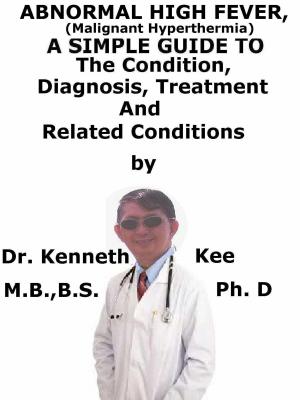Volvulus, (Twisted Intestines) A Simple Guide To The Condition, Diagnosis, Treatment And Related Conditions
Nonfiction, Health & Well Being, Medical, Specialties, Internal Medicine, Gastroenterology, Health, Ailments & Diseases, Abdominal| Author: | Kenneth Kee | ISBN: | 9781370361366 |
| Publisher: | Kenneth Kee | Publication: | August 5, 2017 |
| Imprint: | Smashwords Edition | Language: | English |
| Author: | Kenneth Kee |
| ISBN: | 9781370361366 |
| Publisher: | Kenneth Kee |
| Publication: | August 5, 2017 |
| Imprint: | Smashwords Edition |
| Language: | English |
Volvulus is the medical disorder for a complete twisting of the bowels around the mesentery attachment site supporting the bowels.
It is an infrequent disorder that can affect the stomach, small intestine or parts of the large intestine and is mainly observed in infants or children even though certain types may happen in adults.
It can also result in the obstruction of the blood supply to the whole intestine itself, which can lead to tissue death within the bowel
The volvulus is when a loop of intestine twists around itself and the mesentery supporting it, leading to a bowel obstruction.
Complete obstruction stops food, chyme and waste from traveling further and induces it to back up in the intestines.
The twisting also obstructs the bowel wall so that blood vessels may become blocked.
This may decrease the blood flow through it and reduce the intestinal tissue of oxygen.
Ultimately this will result in ischemia, injury linked with decreased blood flow, or persists further to the point that the tissue of the intestinal wall dies and can even become gangrenous.
Types of Volvulus
Neonatal Volvulus is a result of malrotation during fetal development
Sigmoid Volvulus accounts for 8% of all intestinal obstructions, frequent in elderly persons and constipated patients.
Cecal Volvulus is connected to the abdominal wall along with the ascending colon due to an anatomic anomaly.
Gastric Volvulus is a twisting of the stomach which may involve the cardia (first part of the stomach) or the complete stomach.
In adults the most often involved segment of the intestines is the sigmoid colon with the cecum being second most involved.
A volvulus tends more likely to happen with an anatomic anomaly even in the absence of any other disease.
A volvulus may start with certain diseases:
1. Hirschsprung disease
2. An enlarged colon (Megacolon)
3. Intestinal pseudo-obstruction
4. Intussusception
Volvulus is most often caused by a birth defect called malrotation
Volvulus produces symptoms by:
1. The extent of bowel obstruction manifested as abdominal distension and bilious vomiting
2. Ischemia (reduced blood flow) to the involved section of the intestinal wall
Sigmoid volvulus is the most frequent form of volvulus.
Patients have abdominal pain, distension, and complete constipation
Volvulus happens most often in middle-aged and elderly men.
Infants affected by volvulus have an abrupt start of symptoms the same as those of bowel obstruction.
Diagnosis:
1. Blood tests to assess the electrolytes may show abnormalities.
2. Stool guaiac reveals blood in the stool
3. Barium enema often reveals an abnormal position of the bowel, indicating malrotation.
4. CT scan may show evidence of intestinal obstruction.
5. An upper GI X-ray with small bowel follow-through reveals a malrotated bowel or midgut volvulus.
Non-surgical treatment
This may be suitable for older patients with intestinal malrotation who are asymptomatic but they should be cautioned that volvulus can happen at any time.
Examination and GI decompression with a nasogastric or orogastric tube should be started.
The presence of any intestinal obstruction requires instant surgery
The patient is resuscitated with intravenous isotonic crystalloid solution to correct fluid deficits and hypo-volemia (low blood volume).
Sigmoidoscopic de-torsion is effective in more than 90% of patients with sigmoid volvulus, but colonoscopic de-torsion is effective in only 10-15% of patients with cecal volvulus.
1. Ladd's procedure is the treatment of preference in most patients
It can be done with open surgery or as a laparoscopic procedure.
2. Sigmoid Colectomy and Hartmann Procedure for Sigmoid Volvulus
3. Right Hemicolectomy for Cecal Volvulus
TABLE OF CONTENT
Introduction
Chapter 1 Volvulus
Chapter 2 Causes
Chapter 3 Symptoms
Chapter 4 Diagnosis
Chapter 5 Treatment
Chapter 6 Prognosis
Chapter 7 Intestinal Motility Disorders
Chapter 8 Intussusception
Epilogue
Volvulus is the medical disorder for a complete twisting of the bowels around the mesentery attachment site supporting the bowels.
It is an infrequent disorder that can affect the stomach, small intestine or parts of the large intestine and is mainly observed in infants or children even though certain types may happen in adults.
It can also result in the obstruction of the blood supply to the whole intestine itself, which can lead to tissue death within the bowel
The volvulus is when a loop of intestine twists around itself and the mesentery supporting it, leading to a bowel obstruction.
Complete obstruction stops food, chyme and waste from traveling further and induces it to back up in the intestines.
The twisting also obstructs the bowel wall so that blood vessels may become blocked.
This may decrease the blood flow through it and reduce the intestinal tissue of oxygen.
Ultimately this will result in ischemia, injury linked with decreased blood flow, or persists further to the point that the tissue of the intestinal wall dies and can even become gangrenous.
Types of Volvulus
Neonatal Volvulus is a result of malrotation during fetal development
Sigmoid Volvulus accounts for 8% of all intestinal obstructions, frequent in elderly persons and constipated patients.
Cecal Volvulus is connected to the abdominal wall along with the ascending colon due to an anatomic anomaly.
Gastric Volvulus is a twisting of the stomach which may involve the cardia (first part of the stomach) or the complete stomach.
In adults the most often involved segment of the intestines is the sigmoid colon with the cecum being second most involved.
A volvulus tends more likely to happen with an anatomic anomaly even in the absence of any other disease.
A volvulus may start with certain diseases:
1. Hirschsprung disease
2. An enlarged colon (Megacolon)
3. Intestinal pseudo-obstruction
4. Intussusception
Volvulus is most often caused by a birth defect called malrotation
Volvulus produces symptoms by:
1. The extent of bowel obstruction manifested as abdominal distension and bilious vomiting
2. Ischemia (reduced blood flow) to the involved section of the intestinal wall
Sigmoid volvulus is the most frequent form of volvulus.
Patients have abdominal pain, distension, and complete constipation
Volvulus happens most often in middle-aged and elderly men.
Infants affected by volvulus have an abrupt start of symptoms the same as those of bowel obstruction.
Diagnosis:
1. Blood tests to assess the electrolytes may show abnormalities.
2. Stool guaiac reveals blood in the stool
3. Barium enema often reveals an abnormal position of the bowel, indicating malrotation.
4. CT scan may show evidence of intestinal obstruction.
5. An upper GI X-ray with small bowel follow-through reveals a malrotated bowel or midgut volvulus.
Non-surgical treatment
This may be suitable for older patients with intestinal malrotation who are asymptomatic but they should be cautioned that volvulus can happen at any time.
Examination and GI decompression with a nasogastric or orogastric tube should be started.
The presence of any intestinal obstruction requires instant surgery
The patient is resuscitated with intravenous isotonic crystalloid solution to correct fluid deficits and hypo-volemia (low blood volume).
Sigmoidoscopic de-torsion is effective in more than 90% of patients with sigmoid volvulus, but colonoscopic de-torsion is effective in only 10-15% of patients with cecal volvulus.
1. Ladd's procedure is the treatment of preference in most patients
It can be done with open surgery or as a laparoscopic procedure.
2. Sigmoid Colectomy and Hartmann Procedure for Sigmoid Volvulus
3. Right Hemicolectomy for Cecal Volvulus
TABLE OF CONTENT
Introduction
Chapter 1 Volvulus
Chapter 2 Causes
Chapter 3 Symptoms
Chapter 4 Diagnosis
Chapter 5 Treatment
Chapter 6 Prognosis
Chapter 7 Intestinal Motility Disorders
Chapter 8 Intussusception
Epilogue
